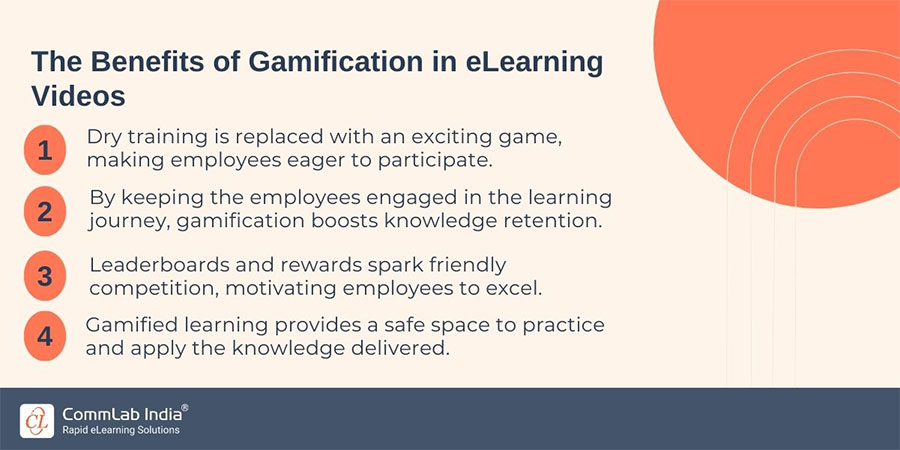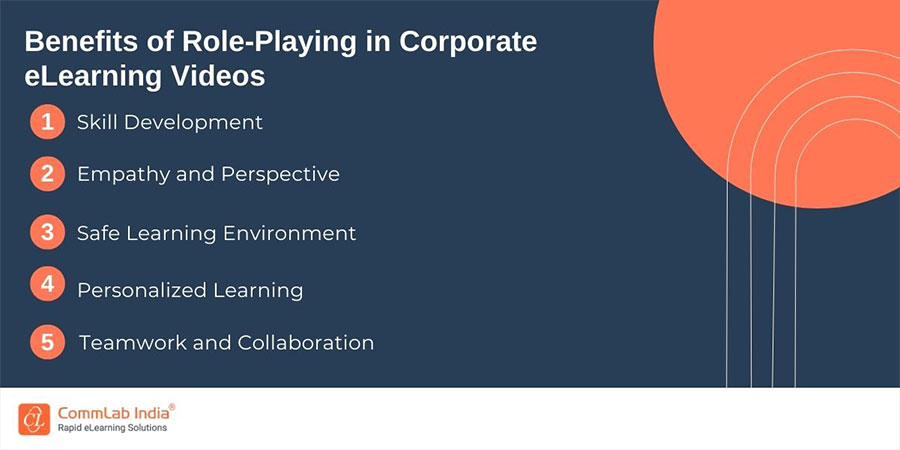8 Interactive eLearning Video Strategies to Revolutionize Training
Want to unlock the power of eLearning videos? Read on to explore 8 game-changing strategies...

Attention spans are shrinking faster than ever, especially in the corporate world where time is money. So how can you ensure that your eLearning videos captivate and engage employees from start to finish? The answer lies in the power of interactivity. By incorporating interactive elements into your training videos, you can not only grab attention but drive real results.
In this blog post, we will discuss 8 interactive video-based eLearning strategies that are sure to leave a lasting impact on your corporate learners. From quizzes and branching scenarios to gamification and virtual simulations, get ready to revolutionize your training approach with these game-changing techniques!
Let's start with understanding what interactive eLearning videos are and what makes them important:
What are Interactive eLearning Videos?
Interactive eLearning videos stand at the forefront of cutting-edge corporate training, seamlessly marrying the visual prowess of videos with engaging interactive features. Think of them as the tech-savvy superheroes of corporate training, incorporating elements like quizzes, simulations, games, and clickable hotspots to revolutionize the learning experience.
Interactive eLearning Videos are Revolutionizing Corporate Training
Interactive videos in employee training transform passive learning into an engaging journey, where participation is the key to unlocking knowledge, retention, and professional growth.
1. Engaging Learning Experience
Traditional training methods often fall prey to monotony, risking disengagement among learners. The solution lies in embracing interactive eLearning videos that elevate the learning experience. By weaving immersive and enjoyable elements into the content, these videos captivate and maintain employee engagement, ensuring a more effective training journey.
2. Personalized Learning
The challenge of catering to diverse learning preferences can hinder the effectiveness of training programs. Enter interactive eLearning videos, offering a solution that empowers employees. Through features like quizzes and simulations, these videos allow individuals to choose their preferred interaction style. The result is a personalized learning journey that accommodates various learning preferences, enhancing overall training effectiveness.
3. Active Learning Promotes Retention
Passive learning often leads to the erosion of information retention. Interactive eLearning videos tackle this challenge by fostering active participation. Through engaging elements, these videos ensure that learners not only absorb information but actively apply it. The result is a significant boost in retention rates, making the learning experience more impactful.
4. Cost and Time-Efficient
Traditional training methods are known for being resource-intensive, consuming both time and finances. The solution comes in the form of interactive eLearning videos, offering a cost-effective and time-efficient alternative. By simultaneously training a large workforce, these videos help businesses save valuable resources while delivering effective training.
5. Scalability
As businesses grow, the need for scalable training solutions becomes paramount. Interactive eLearning videos provide a scalable solution by offering reusable content. Whether used for onboarding new hires or refreshing the knowledge of existing employees, these videos eliminate the need for additional costs, seamlessly adapting to the growing demands of the business.
6. Real-time Feedback
Delayed feedback can impede the progress of learners. Interactive eLearning videos address this challenge by providing real-time feedback through quizzes and assessments. This instant feedback loop allows trainers to gain insights into employee understanding, enabling them to tailor future training interventions for maximum effectiveness.
7. Flexibility
Differing schedules and commitments among employees pose a challenge to traditional training sessions. Interactive eLearning videos provide a flexible learning environment. Empowering employees to learn at their own pace, these videos facilitate a harmonious balance between work and learning, ensuring accessibility and effectiveness.
→ Download Now: Instructional Design Strategies to Design Engaging eLearning Courses [eBook]
Let us now discuss the strategies to develop impactful interactive eLearning videos
8 Strategies for Interactive eLearning Videos
1. Engagement-Centric Storytelling
Approach: Craft narratives that captivate and involve learners from start to finish.
Why: Storytelling is a potent tool that enhances retention and makes even the most complex concepts relatable. By weaving engaging narratives into your eLearning videos, you create an immersive learning experience that resonates with your audience.
2. Gamification Techniques
Approach: Integrate game elements like points, badges, and leaderboards for a competitive and enjoyable learning experience.
Why: Gamification is not just about making learning fun; it taps into intrinsic motivation. By introducing game-like elements, you can drive better engagement, boost participation, and enhance knowledge retention among your learners.

3. Branching Scenarios
Approach: Implement scenarios where learners make decisions, influencing the direction of the video.
Why: Branching scenarios create a sense of ownership in the learning process. By allowing learners to make decisions and witness the consequences within the video, you personalize the learning journey, making it more interactive and engaging.
4. Interactive Quizzes and Assessments
Approach: Embed quizzes and assessments at strategic points for ongoing engagement and knowledge reinforcement.
Why: Active participation is key to effective learning. Integrating quizzes and assessments at strategic intervals not only tests comprehension but also reinforces key concepts, making the learning experience more dynamic and impactful.
5. Real-life Scenarios and Simulations
Approach: Present practical situations where learners can apply knowledge in a simulated environment.
Why: Real-life scenarios in corporate training videos add a layer of relevance to your content. By placing learners in situations mirroring their work environment, you enhance practical application, making the learning experience more meaningful and applicable.
6. Virtual Reality and Augmented Reality Experiences
Approach: Explore immersive VR and AR elements for a heightened and realistic learning environment.
Why: Virtual and augmented reality offer unparalleled engagement. By providing learners with an immersive experience, you enhance their understanding and retention, especially for tasks that require practical training.
7. Role-playing Simulations
Approach: Allow learners to actively participate in realistic scenarios, promoting practical skill application.
Why: Traditional learning methods often fall short in practical skill development. Role-playing simulations create a safe space for learners to practice, make decisions, and learn from mistakes, fostering hands-on learning and skill development.

8. Collaborative Learning Initiatives
Approach: Encourage teamwork and discussion through interactive features, fostering a sense of community.
Why: In today's collaborative workplaces, the ability to work effectively in teams is crucial. Interactive eLearning videos that promote collaboration not only enhance individual skills but also contribute to building a sense of community within the organization.
Here's a quick video on how eLearning videos were used for process training:
Wrapping Up
The integration of interactivity into eLearning videos isn't just a trend; it's a strategic imperative in today's dynamic corporate environment. These robust strategies aren't mere enhancements; they are catalysts for transformation, ensuring that training transcends traditional boundaries and empowers the workforce with skills that directly impact organizational success. Embrace the power of these strategies and revolutionize corporate training for enduring success.
Grab our eBook to explore more engaging instructional strategies for interactive learning:





